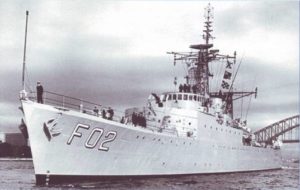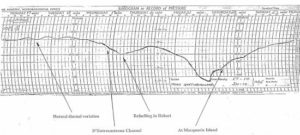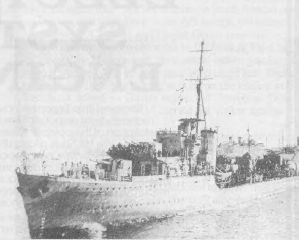It is now comparatively rare for a naval aviator to also qualify as a seagoing watchkeeping officer, but in previous generations it was relatively straightforward and kept one in the ...
HMAS Queenborough
HMAS Queenborough – Medivac in the Southern Ocean 1966
The RAN’s Destroyers
Australian Naval History on 12 May 1975
HMAS QUEENBOROUGH, the last of the five ‘Q’ class destroyers presented to the RAN as a gift by Great Britain, was towed out of Sydney, bound for Hong Kong and ...
Australian Naval History on 7 April 1972
HMAS Queenborough paid off having steamed some 443,236 miles in the RAN. On 8 April 1975 the ship was sold to Willtopp (Asia) Ltd through the firm’s Agents, Banks Bros ...
Australian Naval History on 16 April 1970
An international fleet of 48 vessels from 10 nations visited Sydney for the Bicentenary of CAPT James Cook’s landing. Six of the ships were sail-training vessels:NIPPON MARU, (Japan), LIBERTAD, (Argentina), ...
Australian Naval History on 19 October 1966
HMAS QUEENBOROUGH, (frigate), made a high speed dash from Hobart to Macquarie Island, to rescue a seriously ill scientist of the Australian Antarctic Expedition. ...
Australian Naval History on 28 July 1966
HMAS Queenborough recommissioned for service as a training ship ...
Australian Naval History on 8 May 1963
HMAS QUEENBOROUGH, (frigate), struck HMS TABARD, (submarine), while exercising off Sydney. Both vessels were damaged but returned to Port under their own power. ...
Australian Naval History on 25 October 1962
HMA Ships QUIBERON and QUEENBOROUGH, (destroyer escorts), carried out a search north of Singapore for the cargo vessel KAWI, which had signalled for assistance. A boat from the vessel, with ...


